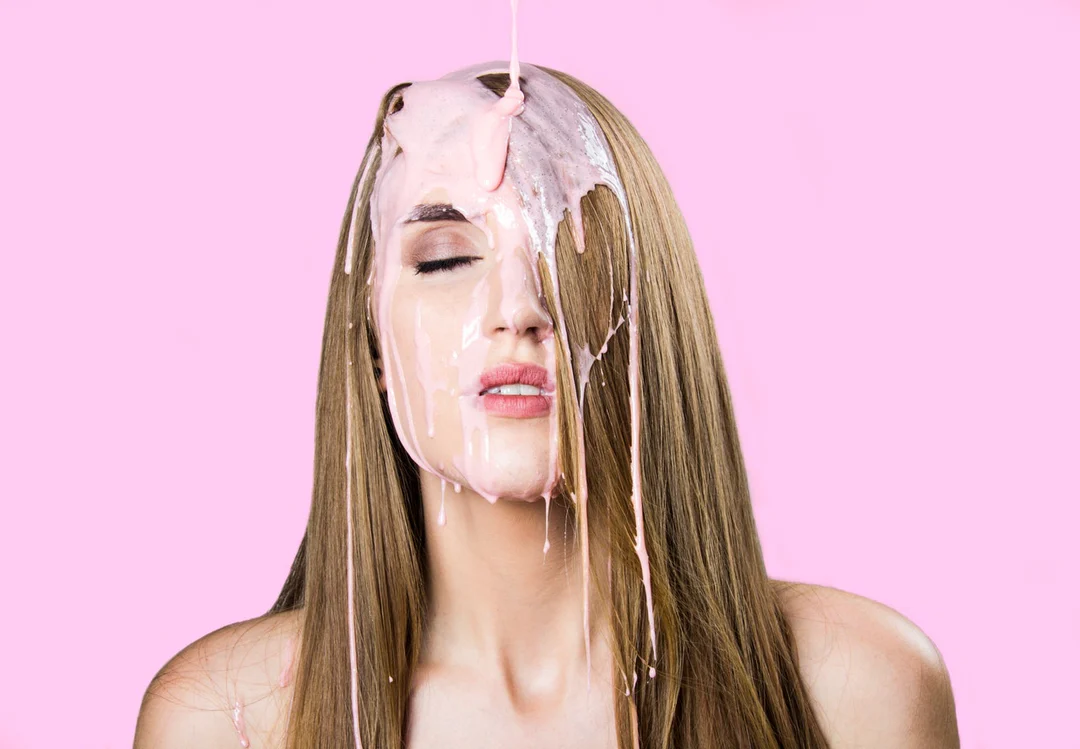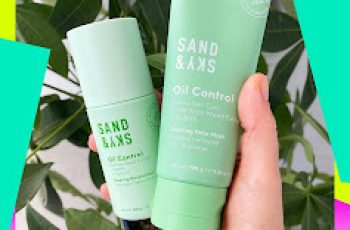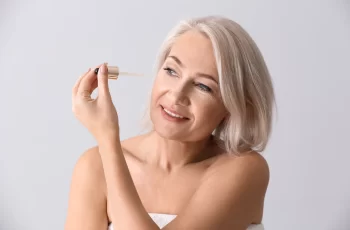Are Retinol and Retinoids the Same Thing?
Retinoids are scientifically proven and clinically proven to treat common breakouts and minimize signs of aging like fine lines and wrinkles. But they’re also a bit of a mystery because despite being one of the most popular ingredients in skincare, there are still many misconceptions about these powerful benefits. Many people find it too complicated to incorporate into their skincare routine, while others simply don’t know where to start. This is completely understandable, especially since the names retinol and retinoid are often used as if they are interchangeable, when in fact, they are completely different. So, with that in mind, let’s learn more about them and how they actually differ.
What is the difference between retinol and retinoids?
There are some differences between retinol and retinoids, the main difference being the molecular size of these ingredients. For example, the most effective concentrates are prescription retinoids, which are extremely potent and can only be used with the approval of a doctor, dermatologist, or trained professional. These formulas are not available over the counter, and this is where retinols come into play.
Retinol is a form of retinoids, and you can usually find them in a variety of products in stores and online. Although derived from retinoids, over-the-counter product formulas contain other ingredients designed to reduce their effectiveness, allowing your skin to build up a tolerance, making it easier to incorporate into your daily life without causing serious side effects such as redness, rashes, skin problems. Irritation and other reactions often caused by retinoids can occur. However, keep in mind that some of the side effects listed may still occur depending on the formulation, so it is crucial to use the product correctly.
What is a retinoid?
Retinoids are a form of vitamin A that are commonly found in all types of skin care products, sometimes over-the-counter, but more often in prescription products. It is very effective and offers a range of skin care benefits, such as fighting acne and problem skin. It does this by exfoliating the outer layer of the skin, removing excess sebum and dead skin cells, which over time can lead to other blemishes such as pimples and blackheads.
While it is hailed as the most effective ingredient for clearing skin blemishes, it is also widely praised for its ability to reduce signs of aging such as fine lines, wrinkles, and expression lines. It promotes collagen production, making the skin’s surface appear smoother and plumper.
When it comes to retinoids, you can expect the most effective formulas to be available only by prescription. However, there are also a variety of forms of retinol available in over-the-counter blends that vary in strength and price range.
What is retinol?
Retinol is actually a retinoid that is found in over-the-counter products but is easily available online or in select stores. When you incorporate retinol into your skincare routine, you can expect it to provide the same skin benefits as retinoids. You’ll find that retinols are usually found in lower concentrations than the active ingredients found in retinoids. This also means that over-the-counter products are usually easier to incorporate into your daily routine as long as they are used correctly. If you need help clarifying the matter and figuring out how to introduce retinol, you can check out a dedicated blog post on the benefits of retinol in skin care and how it affects your skin.
Due to the lower concentration of retinoids in the formula, you’ll find that over-the-counter products work more slowly on your skin. Keep in mind that different names are listed for types of retinol, such as retinyl palmitate, retinyl linoleate, retinal, retinyl acetate, and propionic acid. You can find all of these ingredients in the ingredient list on the product packaging, and the effectiveness of the concentrate is shown by the time they are listed. Ideally, retinol should appear in the top 5. Keep in mind that over-the-counter products are often mixed with other ingredients, such as hyaluronic acid, to achieve balance and make the formula easier but less effective to apply to the skin.
Are retinoids better than retinol?
Both retinoids and retinol offer similar skin benefits to improve the skin, but come in different concentration levels. This simply gives you the opportunity to find the product that works best for your skin and your daily routine. If you want to get to the heart of the matter and focus only on the ingredients, then retinoids are indeed better than retinol. However, when you consider that retinoids are only available by prescription, you will find that retinols offer the same effects, but are more gentle, and may take several months to show the full results on the skin.
Are retinols weaker than retinoids?
The best way to look at retinoids and retinol is that they are not identical sisters, but cousins. Related, but not identical. If you have severe acne and rashes that require a visit to your primary care physician or dermatologist, you will likely be prescribed a retinoid medication. Because they are standard medical products, concentrates are higher in potency and come at levels you won’t find over the counter, which technically means retinols are weaker. However, this doesn’t mean that the products you find with retinol are ineffective, but rather that they are easier to incorporate into your daily routine without having to worry about the formula being too harsh on the skin. Still, retinol is one of the most potent ingredients on the market and needs to be worked into the skin slowly. I would recommend using it once a week in the evenings at first. This will build up skin tolerance and hopefully prevent skin irritation or flare-ups.
Hopefully, you now know a little more about the admittedly difficult, yet popular, skin ingredient. Honestly, it doesn’t matter if you use a retinoid or retinol, just use one or the other. After all, your skin will never look that good! If you have any additional questions about retinol (or retinoids), you can DM me via our Instagram.
DQH Knowledge drop: In your 20s, your skin cell turnover decreases. (Cell turnover is a key component in keeping your skin youthful.) You know what else slows down? Your collagen production. Starting in your 20s, collagen decreases by about 1 percent per year. Should you want to prevent fine lines and wrinkles, start by eliminating behaviors that contribute to premature aging. “If it’s bad for you, it’s bad for your skin,” says dermatologist Michel Somenek.
“Cigarette smoking reduces blood flow to the skin and causes premature wrinkling and a dull skin texture. Making the repeated pursed motion to inhale can also cause smoker’s lines. Alcohol and recreational drugs are toxins for the skin that damage its cellular structure and DNA,” Somenek tells us. “The faster you eliminate vices while you are young, the better chance your skin and body have to recuperate.” Also, adopting an anti-aging routine in your 20s is key. After all, the best offense is a good defense. We spoke to Somenek and experts Joshua Ross and Audrey Kunin to find out more.
Keep reading for the best anti-aging products for your 20s, according to skincare professionals.
Sunscreen
“We all know that the sun is the number one cause of skin aging and starting the prevention in your 20s is very important,” Ross says. “The majority of your sun damage won’t start to appear until you’re in your 30s, so don’t wait until you see it surface or you’ll be behind the curve. Stay ahead of it with a good-quality zinc-based sunscreen worn daily.”
Farmacy Green Defense Daily Mineral Sunscreen
An invisible sunscreen with SPF 30, plus botanical extracts meant to protect skin with tons of antioxidants. Bonus: It’s clean and fine to use under makeup.
Bareminerals Complexion Rescue™ Tinted Moisturizer Broad Spectrum SPF 30
Although we recommend you use your SPF and moisturizer separately, we also understand moments when you don’t have time or energy for that extra step. For those times, this bareMinerals moisturizer is a great thing to have on hand.
Vitamin C Serum
“A great introduction to anti-aging is to start with a vitamin C serum in your morning skincare routine,” Ross says. “It’s a powerful antioxidant that will neutralize free radicals and brighten the skin.” He adds that it’s a great way to counteract the effects of the sun’s harmful rays, which, as previously mentioned, are among the biggest causes of premature aging.
Drunk Elephant C-Firma™ Vitamin C Day Serum
The Drunk Elephant C-Firma is a lightweight serum that promises to give skin a glow by combining the brightening powers of vitamin C with ferulic acid, l-ascorbic acid, and vitamin E. The included sodium hyaluronate is meant to replace hydration loss, so you shouldn’t have to deal with any irritation.
Sunday Riley C.E.O. Rapid Flash Brightening Serum
This potent serum is jam-packed with vitamin C (15 percent, to be exact), which means it’s a potential superstar at both brightening skin and dousing it in antioxidants.
Peptides
Using peptides on your skin has many benefits, says Somenek. “The skin barrier is what defends the body against pollution, UV rays, bacteria, and toxins. It can be damaged by several everyday factors. Using topical peptides aids in building a stronger barrier,” he says. “Peptides comprise elastic fibers, which are a type of protein. These fibers help to make skin appear taut and firm. Peptides can also help repair damaged skin, relieve inflammation, and even out skin tone. Some peptides can kill acne-causing bacteria that is common in 20-somethings.”
Kunin agrees, saying, “Peptides are an excellent entry point for supporting collagen.” She recommends looking for face and eye treatments that contain these collagen-boosting powerhouses.
Charlotte Tilbury Magic Eye Rescue Cream
This Charlotte Tilbury super-emollient eye cream has a base of coconut oil and shea butter (read: it’s incredibly hydrating). Botanicals plus peptides are meant to help reduce dark circles and boost collagen, respectively.
This creamy moisturizer serves up potent collagen-boosting peptides and pycnogenol, and antioxidant-rich vitamin C. “Instead of sitting on top of the skin, peptides penetrate the outer layer so they go deep. The ‘signals’ they send tell the cells to produce elastin and collagen, which are needed for youthful-looking skin,” explains Somenek.
At-Home Peel Pads
Remember that skin cell turnover fiasco we talked about earlier? One way to help support it is by exfoliating. “Exfoliation is important to help keep skin fresh and luminous,” Kunin says. She recommends using at-home peel pads as an easy and effective way to exfoliate.
“The goal in your 20s is to fight the slowing pace of cell turnover. It is wise to use products that gently exfoliate, yet still remove oil and other impurities. Products that have Alpha Hydroxy Acids (AHA) or Beta Hydroxy Acids (BHA) are a good choice.”
According to Somenek, you should only exfoliate two to three times a week. “People of all ages are guilty of over-exfoliating and that can be too much of a good thing,” he says.
Dermadoctor Kakadu C Intensive Vitamin C Peel Pad
A few swipes of this Derma Doctor powerful peel pad promise to leave your skin glowing and smooth, thanks to the seven (yes, seven) types of chemical exfoliants, including AHA and BHA. It also contains vitamin C via Kakadu plum extract for added brightening and antioxidant protection.
KEY INGREDIENTS Kakadu plum extract is sourced from the Kakadu plum, a fruit grown in northern Australia. It contains vitamin C, which restores the skin’s natural barrier, increases collagen production, and soothes irritation.
Dr. Dennis Gross Skincare Alpha Beta® Universal Daily Peel Pads
These are the gold standard of peel pads, with a cult following and over 900 five-star reviews on Sephora. They’re easy to use and contain a blend of anti-aging exfoliating acids.
Emollient Night Cream
“In your 20s, you need to start upping the hydration in your skincare routine. You may have been cautious of over-moisturizing because of acne in your teens, but as you enter your 20s, your skin transitions and becomes drier,” Ross says. “I recommend an emollient night cream added into your evening skincare regimen.”
“Twenty-somethings need to make sure that they are not using creams that will clog their pores and cause excess oil production,” says Somenek. Opt for non-comedogenic products.
Cerave Skin Renewing Night Cream
One great choice is the CeraVe Skin Renewing Night Cream, which is a non-comedogenic night cream that leaves skin soft and glowy. It combines the moisturizing powers of ceramides and hyaluronic acid.
RoC Retinol Correxion Max Hydration Creme
“The best night cream ingredients contain retinol, benzoyl peroxide, and/or salicylic acid or hyaluronic acid. The goal is to moisturize, yet remove excess oil,” says Somenek. This Roc Retinol Correxion cream fits the bill as it contains both hyaluronic acid and retinol so it promises to moisturize while also being non-comedogenic.



